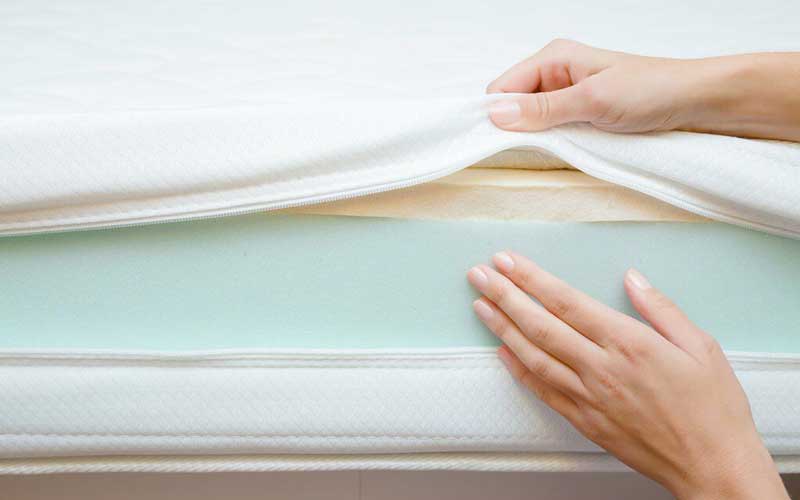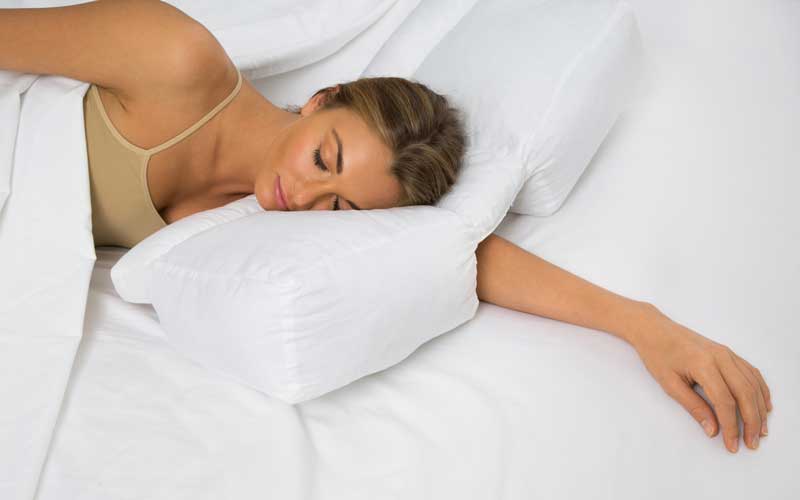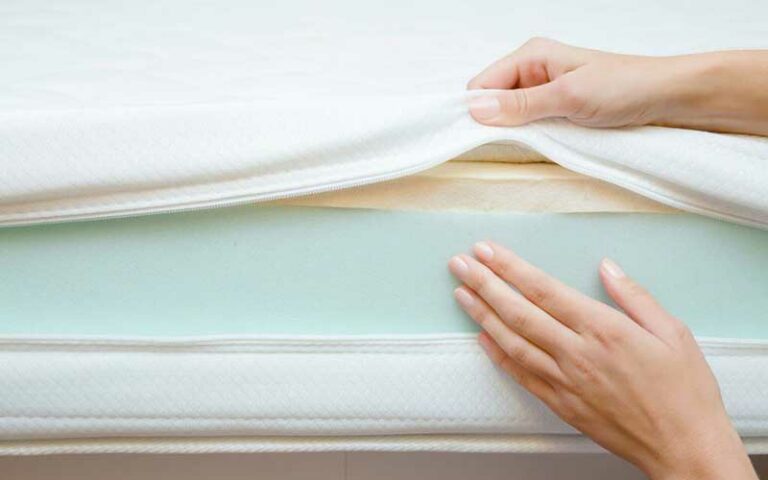Experiencing quality sleep every night is an essential part of a healthy lifestyle and overall well-being. One of the most important factors in sleeping well is having the appropriate mattress.
And if you’re wondering if it’s time to replace your mattress, the chances that you do are relatively high. There isn’t a rule of time when it comes down to time for changing your mattress. However, we created today’s article to help you decide when it’s time to change your mattress.

When It’s The Time To Change Your Mattress?
There might not be a set rule as to when you need to make a change, but if you any of the following, that’s a good enough sign:
- Signs of wear & tear – this may include lumps, sagging and even coils tearing through the fabric.
- Squeaking springs – if your springs are becoming nosier, that’s a good sign that your coils are no longer providing the support you need since they’ve been worn out.
- Allergies have worsened – with the years’ mattresses collect the majority of the dust mites and allergens in your home, which is why they can have a negative impact on allergies and asthma.
- Muscle stiffness – when your body is feeling sore and stiff, your mattress is no longer comfortable or supporting your body, and its needs.
- Gaining weight – sometimes adding a few extra kilos can affect an older mattress and change your sleep quality.
- Partner’s movement – if the mattress needs replacement it would have lost its ability to reduce motion transfer, thus why you can feel more action from your partner.

What are the reasons to change your mattress?
As we mentioned, there are a few reasons why you may need to change your mattress, such as tears, lumps, noisy springs, etc. Most mattresses have a lifespan of 7 or 8 years depending on their quality. In general, the higher the quality, the longer it will last.
However, keep in mind that the type of mattress you get makes a difference. Here are the most common options:
Memory foam
Memory foam mattresses contour the body, which can be an excellent way of pressure relief. Memory foam tends to deform and take the body’s shape, increasing pressure in sensitive areas if the mattress is too soft.
This type comes in different materials and densities, which determines how long they will hold up. A high-quality option can last from 10 to 15 years. However, you have to take of it, for it to last that long, doing things like regular rotating.
Latex
Latex models typically offer more bounce and responsiveness than an innerspring option. They tend to be cooler, which is why they are popular in the summer.
A latex mattress’s durability depends on whether you choose a synthetic or organic option. Some latex versions can last as long as 20 years if they are appropriately taken care of.
Innerspring
Spring mattresses use coils that often provide the traditional bounce feel and firm support. Sometimes they might be found old-fashioned, but they can be a good support source, especially when paired with a layer of high-quality foam.
Usually, an innerspring option contains coil support systems that help to distribute your weight. They often last up to 10 years if flipped over so that the wear and tear are evenly distributed.
Hybrid
Hybrid mattresses combine memory foam or latex layers and an innerspring mattress, designed with two sides that offer a different firmness level. They promote fantastic support with growing popularity because of the innerspring core and the top layer’s comforts.
Typically, a hybrid mattress contains a base layer of foam or latex, a coil support system, and a top layer of foam or latex. Their durability depends on the base’s grade, but a hybrid needs replacement every 5 to 6 years on average.
Waterbed
Even though this isn’t a trendy choice, waterbeds come in two types: hard-side and soft-side. The soft-side option is encased in a foam “box”, making it look like a regular mattress. In contrast, the hard-side one is the traditional type of vinyl waterbed mattresses.
These beauties are making a comeback and can last anywhere from 5 to 10 years.

How long does a memory foam mattress last?
As we mentioned in the previous question, memory foam mattresses, usually last around 10 to 15 years and often last longer than traditional sprung options. The reason for that is the mould to your body while you are asleep, but return to its original form when you get out of bed.
However, that doesn’t mean you won’t have to replace yours sooner than its recommended lifespan. That depends on how you took care of it and how often did you use it. If the mattress is starting to lump and it’s not as comfortable as it used to be, it’s time for a new one.
Use your judgement and don’t stop looking for signs to see if your mattress is negatively affecting your quality of sleep.

What mattress replacement should I choose?
We understand that figuring out when you need to replace your old mattress and shopping for a new one can be overwhelming. But here at LightSleeper, we find it our mission to help you on your journey.
Here are the first three things you have to consider when choosing a replacement:
Size
The basic mattress sizes include twin, full, queen, king and super king. The first thing you have to consider is the available space you have for it and after that think if you’ll be sharing it with someone. An excellent way to decide on the size is to look at your current option, and if the amount of space you have to sleep is enough.
If you fight for a blanket with your partner, you can get a second one, but that doesn’t work for your bed. If the space you have now isn’t enough, you should consider upgrading to a larger size. However, if there is zero space left in your room, you might have to think about downsizing for maximum.
Firmness
Mattresses are also rated on their firmness. Even though you need something on the firmer side, you have to think about exactly how firm that means for you.
A great way to determine that is with your body weight. The higher your weight is, the firmer of a mattress you might need to get. That doesn’t mean it’s a set in stone rule. Don’t forget that it depends on the individual sleeping preferences because people are different.
With that said, make sure you select a product that will support the spine well enough.

Sleeping Position
Another essential factor to consider when choosing a mattress will be your sleeping position. The way you sleep can determine what areas you put the most pressure on, which will help you narrow down the options that will accommodate your needs.
If you’re a back sleeper, you’ll most likely prefer a product, which will alleviate pressure points in the lower back area. Therefore you should consider a medium firm. Next in line are side sleepers, which often put pressure on their shoulders and lumbar region, and that’s why they need a medium-firm mattress as well.
Lastly, we have stomach sleepers, who put pressure on their neck and back, so their best option will be a firm mattress since it’s excellent for spine support.
Comfort
Mattresses have different firmness options, but they also have different comfort levels. They can vary in a range from plush to pillow top. However, not all brands have a way to mark that, but if they do, make sure to check it out.
Some manufacturers will have a colour system and other alphabet versions, categorising them in a specific way. Find one that will offer a comfortable and supportive sleeping surface that will meet your individual needs.

How often should you replace your child’s mattress?
By now, we’ve all seen how much of an impact a mattress can have on the quality of our sleep. Nobody is more important than our children, who are constantly growing up. That’s why you need an excellent mattress that will provide support for your little one through the night so that they can get some rest.
Adults typically have to replace their mattress every 7 or 8 years, but that’s not the case for kids. We recommend changing theirs every five years to ensure they receive the appropriate support for their little bodies.
However, this doesn’t mean that you should keep one for five years if it’s tearing, sagging or becoming uncomfortable. If that happens, you should replace it as soon as possible, so that your child is sleeping blissfully without being disturbed in any way.

What should I do with my old mattress?
Nowadays, brands have many extra options they provide when it comes down to their service. If you don’t know where or how to dispose of your mattress, you can have someone else do it for you. Most mattress suppliers offer a service, usually for additional cash in which they can take your old mattress from you when they deliver the new one. That way, you save yourself the hassle and the lifting.
Final Words
People spend a third of their life asleep, which is why getting a good night’s sleep is essential for your health. Replacing your old mattress with a new one can leag to significant benefits for your rest.
To conclude, always try to choose a mattress that allows you to sleep comfortably and replace your old one if it’s been more than a few years. Even though we might not be professionals, we’ve tested, researched and checked everything we’ve put in our guides.
If your mattress has a lot of sags in it, you won’t get the support you need, which is why its time to get yourself a new one. As always, if any questions regarding the subject were left unanswered, don’t be afraid to ask them in the comments below.

